Gamma Our Universe Was Cooked in Less Time Than Roast Beef and Mashed Potatoes
The Best Food Storage Supplies for Your Prepper Pantry
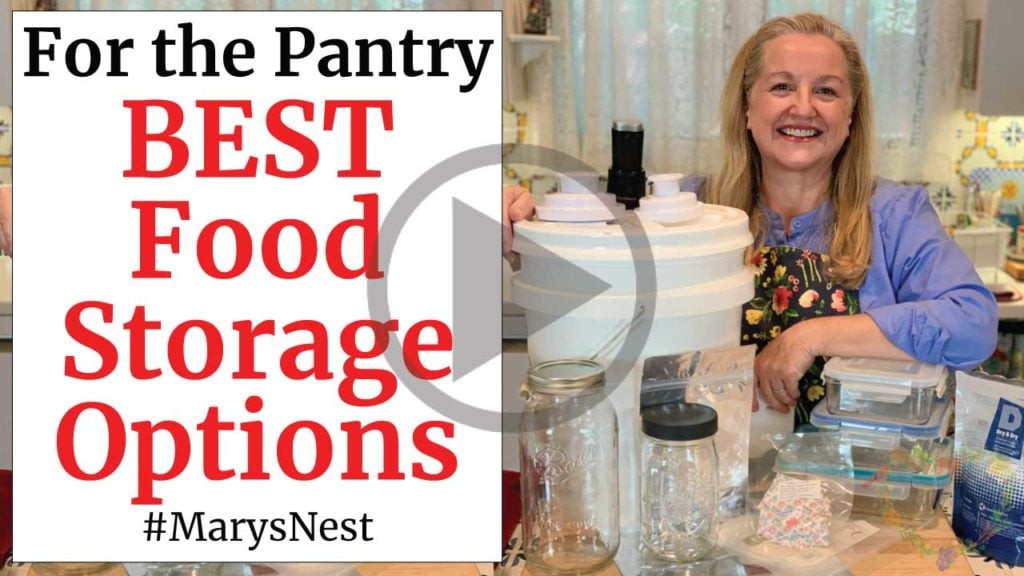
In today's video, I show you the best food storage supplies to preserve food long-term in your Prepper Pantry. You'll learn how to use:
- Food Safe Buckets
- Mylar Bags
- Glass, including canning jars and commercial containers
- Foodsavers, covering handheld and larger devices
- And More!
This is not a sponsored post. I purchased all of these products, and I use them in my Prepper Pantry.
National Preparedness Month
September is National Preparedness Month, and continuing with my Prepper Pantry video series, I'll show you the best storage supplies for the foods that you purchase or make homemade for your Extended or Prepper Pantry.
As I have shared in the past, it is so important to put together a food storage plan and implement it little by little to stock your Prepper Pantry. When you have a plan and implement it slowly, you will build up your food supplies so that when an emergency strikes, you do not have to run out to the store in a panic. You will already have everything you need for you and your family.
As you make the investment to stock your Prepper Pantry, you want to make sure that you choose the right containers to protect your food and extend its shelf life as long as possible.
Oxygen Absorbers Versus Silica Gel Packs
Before we even start talking about food storage containers, you'll want to learn about the difference between Oxygen Absorbers and Silica Gel Packets, since both of these supplies will play essential roles to preserve your food for the long term. I address when to use which one—and more importantly—when NOT to use one, especially when it comes to Oxygen Absorbers.

- What is the Difference Between Oxygen Absorbers and Silica Gel Packs?
What Are the Best Food Storage Supplies?
Now that you know about Oxygen Absorbers and Silica Gel Packets, let's discuss the types of food storage containers we can use with them.
When it comes to storing foodstuffs for the long-term in containers, how do you know which food storage supplies are the best ones to use? In my food storage supplies video, I review various types of food storage containers that you can use to store an assortment of dry goods.
5-Gallon Food-Grade Storage Buckets
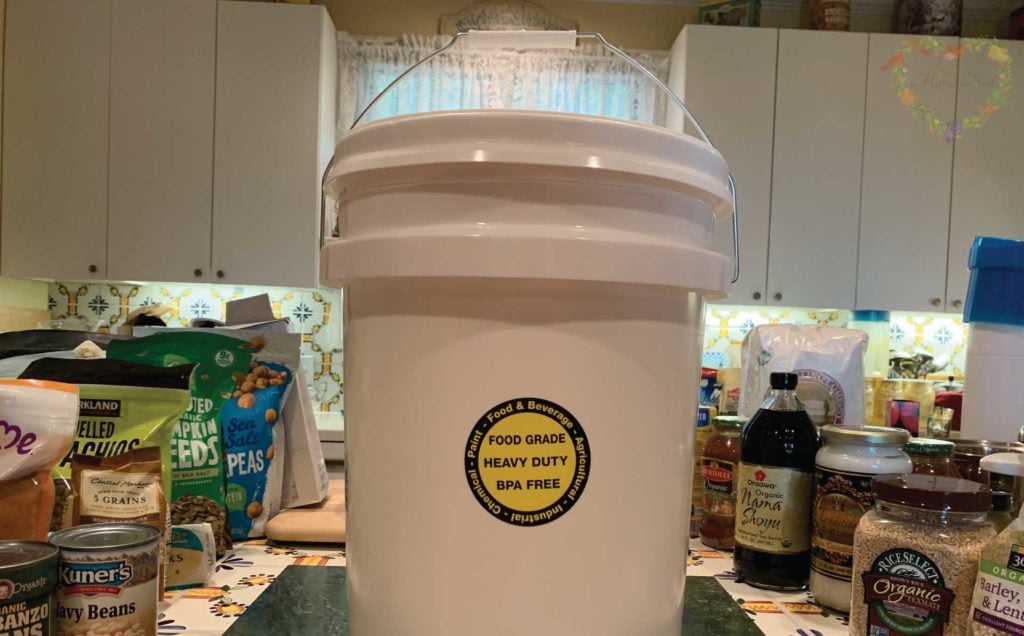
You can use 5-gallon food-grade buckets with air-tight lids to store large amounts of shelf-stable foods, including:
- Sugar
- Salt
- Flour (such as all-purpose flour or bread flour that has had the bran and germ removed)
- Whole grains
- Beans
- White rice
- And more
These foods can enjoy a long shelf life when stored properly in these buckets.
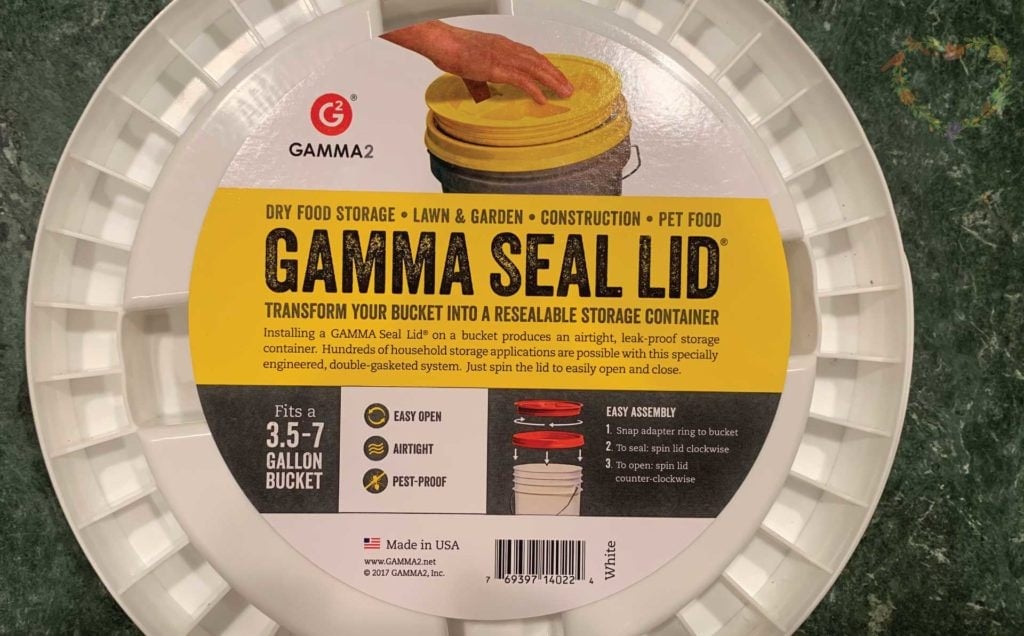
Be sure to watch my video, where I discuss the whole array of long-term food storage containers in addition to the popular 5-gallon buckets. I also show you the importance of using gamma lids and the proper (and easiest) way to install them on your buckets.
Avoid Storing Flour for the Long Term
You want to avoid the long-term storage of whole grains that have been ground into flour. Ground whole grain flour does not have a long shelf life because the bran and germ contain oils that can go rancid quickly.
Generally, the shelf life of even the best-stored whole grain flours will be six months to maybe one year. So your best bet for extending the life of your whole grains is to store them whole rather than ground into flour.
Grind Your Own Flour
If you store whole grains, you can create your own flour using a grain mill. In my previous Mockmill unboxing video, I show you how to grind your own flour with the product that I purchased. If you decide to shop for your own Mockmill, be sure to use my affiliate link for an extra 5% discount.
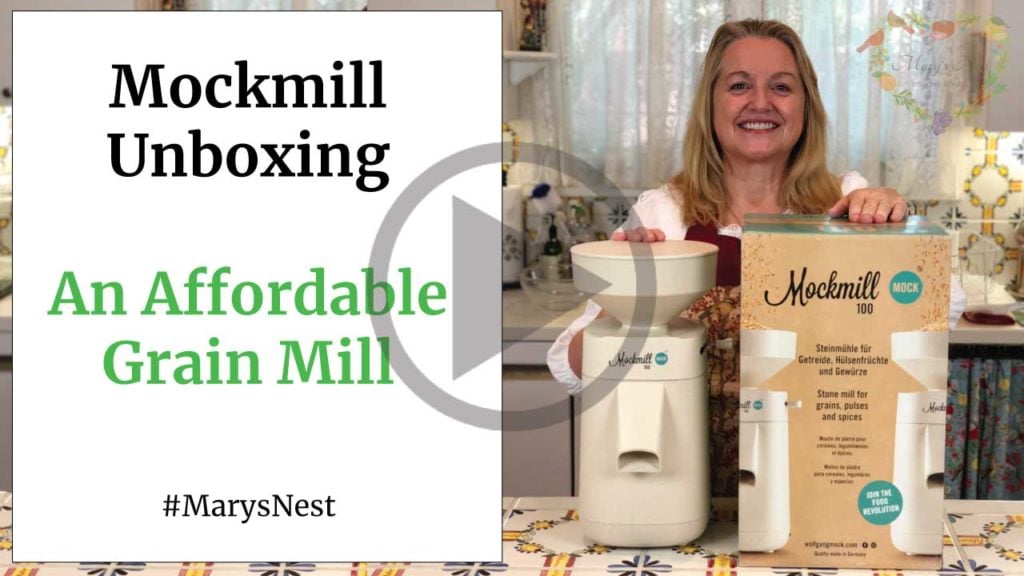
- Mockmill 100 Grain Mill Unboxing and Review
What If You Are Storing Food for 1 or 2?
If you are stocking your Prepper Pantry, but you are only planning to feed one or two people, does it make sense to use large food storage containers? If so, what is the best way to store your food for the long term using large containers?
We have a small family, so I prefer not to dump all of a particular dry good into a large bucket. Why? Because every time I open the bucket for the small portion that I need, I expose the dry goods to air, which only shortens their shelf life.
Instead, I like to store my dry goods that have 10% or less moisture in sealed 1-gallon mylar bags with an oxygen absorber. I can place multiple sealed mylar bags into my large bucket. I could store my mylar bags directly into my Prepper Pantry, but I like the extra protection that the bucket offers.
Protection? Yes, protection from rodents. No food storage container is 100% rodent-proof, but you want to do your best to protect your food whenever you store large amounts of it. And a few layers of protection are your best bet.
Store Foods with 10% or Less of Moisture
When storing dry goods in a food storage container with an oxygen absorber, I stress that I only store foods with a moisture content of 10% or less. That is very dry food!
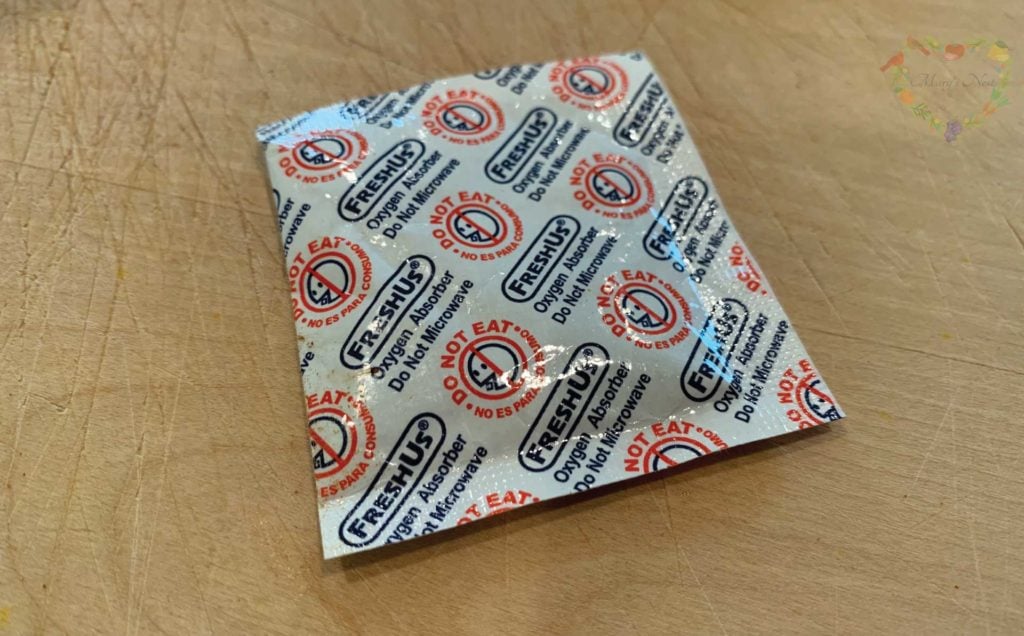
As I explain in my Oxygen Absorber versus Silica Gel Packet video, the only type of foods that you can store with an Oxygen Absorber must have a moisture content of 10% or less. Otherwise, you risk creating an environment ripe for the development of botulism poisoning.
For more information about what foods CANNOT be stored using an Oxygen Absorber in food storage containers, be sure to review the long-term food storage guidance from Latter Day Saints.
Keeping Bugs Out of Your Prepper Pantry
When it comes to discouraging bugs from destroying your food, you have a number of options to deal with those pesky critters. One option is to freeze your dry goods for 14 days to kill any bug eggs that might be present. Freezing potentially kills all those eggs so that they never hatch.
But what if you don't have all that freezer space? I don't have that type of space, so I turn to other options for help. Personally, I like to add bay leaves to my food storage containers whenever I store dried goods loosely in plain plastic bags, glass jars, or other food storage containers.
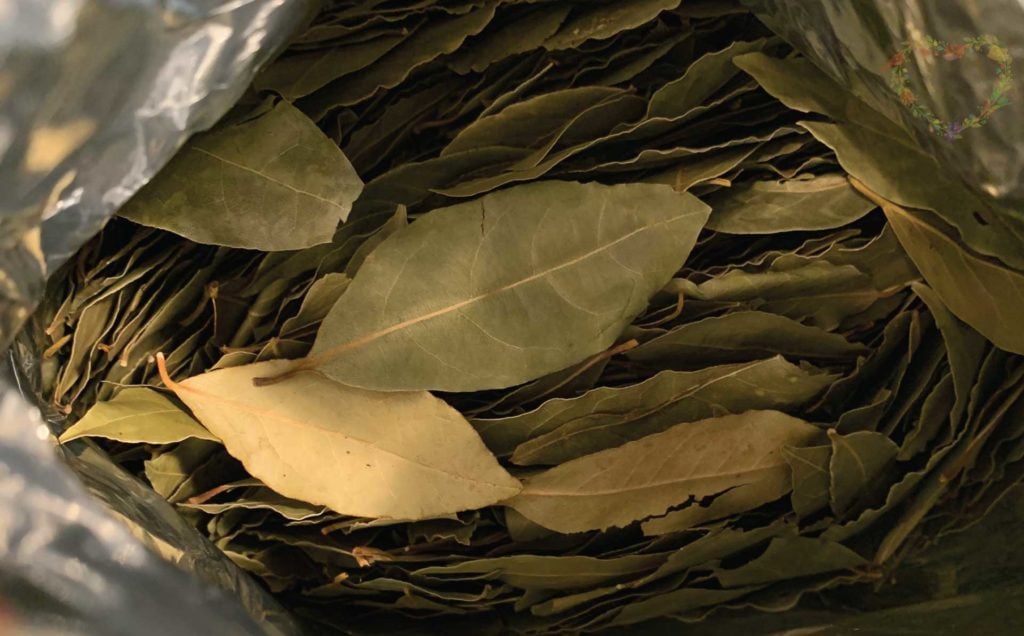
I generally don't use bay leaves when storing food in a mylar bag with an Oxygen Absorber because it is unlikely that bugs will be able to get into that type of tightly-sealed bag.
If you use food storage containers to store something like all-purpose flour, you should tuck a few bay leaves into the flour to prevent bugs coming into the flour. Note that the bay leaves won't kill any bugs, but it will discourage them.
More Food Storage Supplies
This blog post covered just a few of the food storage supplies that you can use in your Prepper Pantry. To learn about all the supplies that you can use, watch my food storage video. I talk about the benefits of using glass containers and why I prefer not to use Diatomaceous Earth with my foodstuffs.
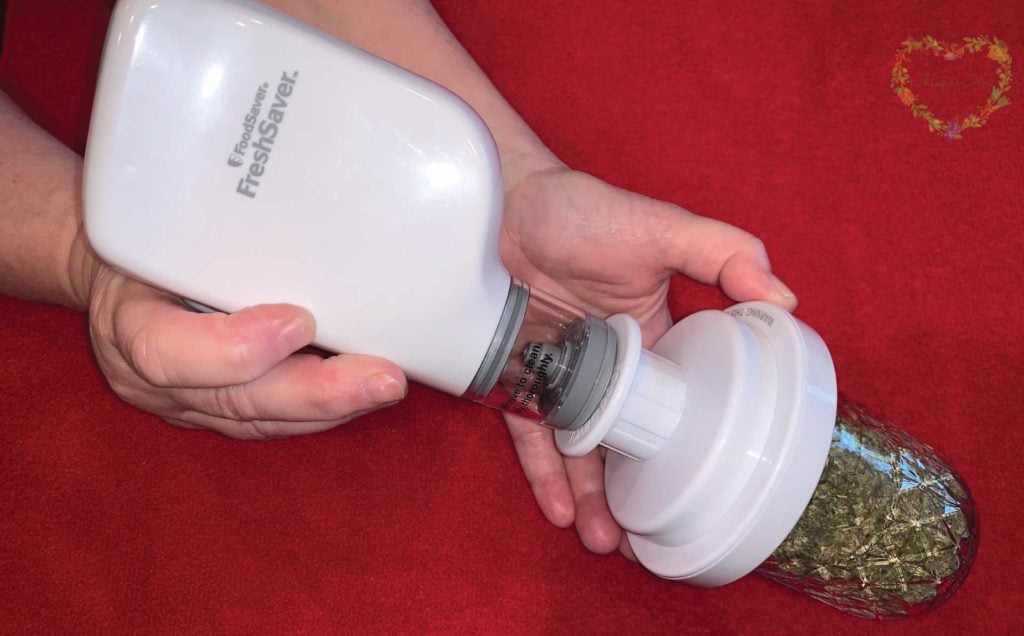
I also show you how to use the handheld Foodsaver device to store dry goods in my canning jars in the video.
Food Storage Resources
For more details on how to store food long-term, visit the following resources:
- Long-term food storage (Latter Day Saints)
- Preserve the Harvest (Utah State University Extension Service)
- A Guide to Food Storage for Emergencies downloadable booklet (Utah State University)
- Silica Gel Packs (Silicon dioxide) (Food and Drug Administration)
- How Long Can You Save It? (FoodSaver Blog)
- Glass jars for canning, pickling, and preserving (Ball Canning Supplies)
Don't Miss This Free Pantry List
Now that you know about the best supplies to store food long-term, be sure to download my free 36-page Pantry List. This comprehensive eBook contains detailed lists of foods that you can store in all areas of your Four Corners Pantry, including your Extended or Prepper Pantry.

- FREE 36 Page Traditional Foods Pantry List – Printable Pantry Staples List
Prepper Pantry Video Guides
Not sure how to start building your Prepper Pantry? These videos will guide you through the process. You can learn about why storing for the long-term will help you and your family in case of emergencies. I'll also show you a simple process that enables you can build up the supplies in your Extended or Prepper Pantry little by little and within your budget with each trip to your grocery store.
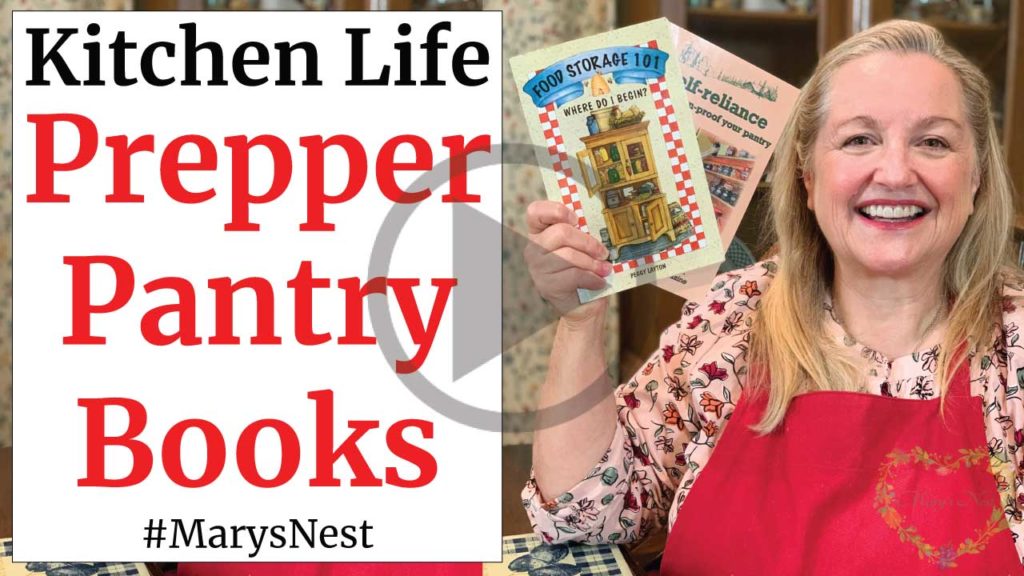
- Prepper Pantry Food Storage 101 – Where Do I Begin?
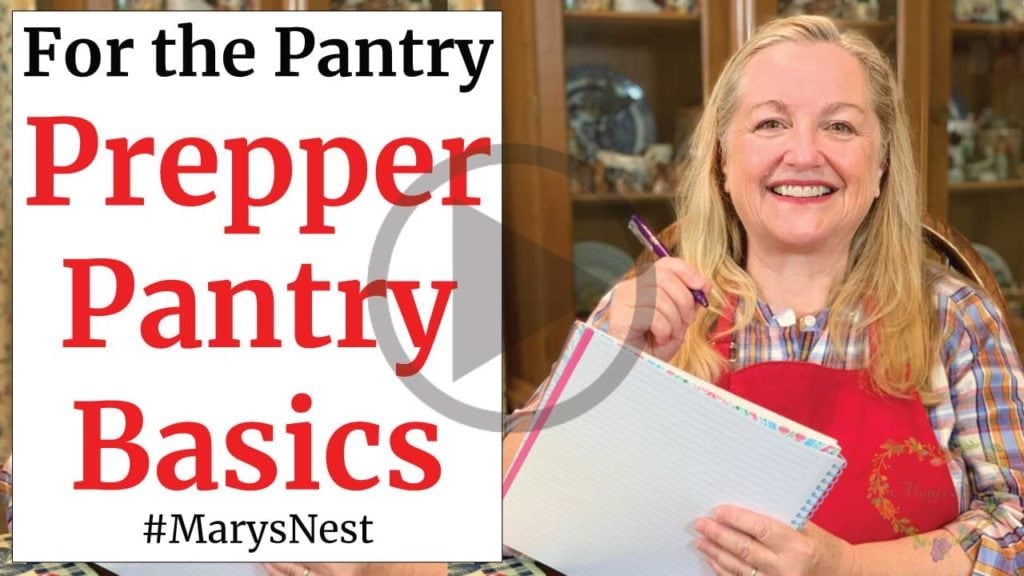
- What is a PREPPER PANTRY? And Why We All Need One.
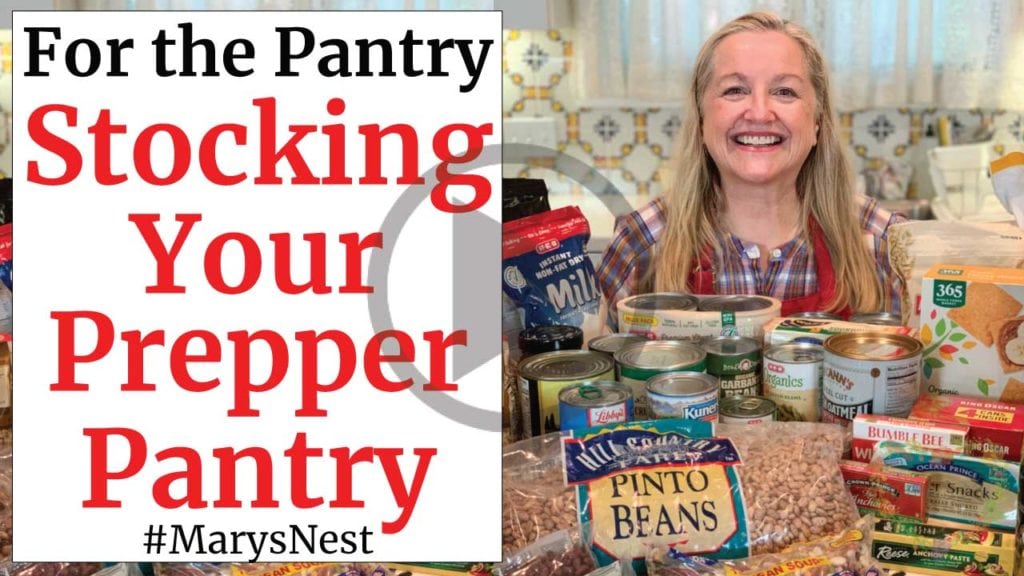
- How to Stock Your Prepper Pantry with Real Food
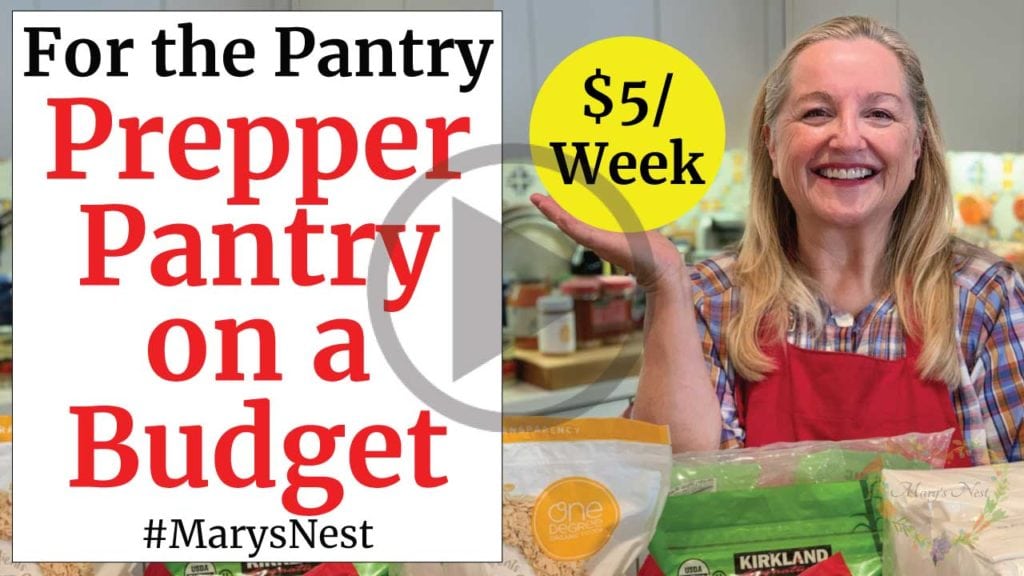
- How to Stock Your Prepper Pantry for $5 a Week with a Prepper Pantry Grocery List
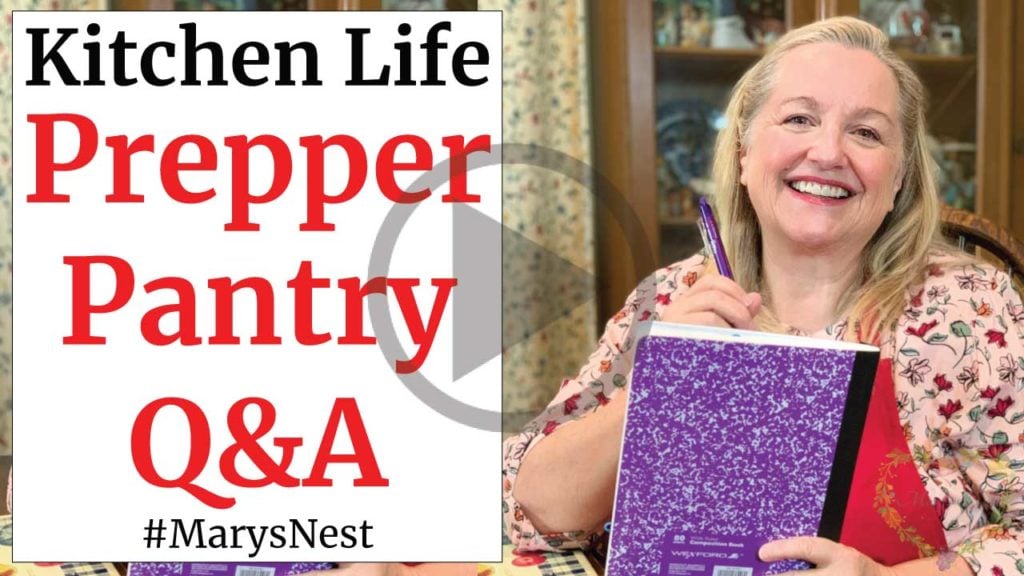
- The Prepper Pantry – Your Questions Answered
Stay in Touch with Mary's Nest
- Subscribe to My YouTube Channel for Traditional Foods Videos (Free) - When you subscribe, be sure to click on the notification bell that will let you know each time I upload a new video.
- Subscribe to Mary's Traditional Foods Newsletter (Free) - Get a free eBook for signing up: How to Stock Your Essential Traditional Foods Four-Corners Pantry.
- Join the Traditional Foods Kitchen Academy (Optional Paid) - For more detailed videos, live streams, and exclusive members-only perks, join my YouTube membership community.
I look forward to having you join me in my Texas Hill Country Kitchen!
Love,
Mary ♥
Shop for Items Mentioned in This Blog Post
Favorite Food Storage Supplies
- Oxygen Absorbers (500 cc) (300 cc)
- Silica Gel Packs (5 g) (10 g)
- 5 Gallon Buckets with Lid
- Bucket Lid Opener Tool
- Gamma Lids
- 5 Gallon Mylar Bags
- 1 Gallon Mylar Bags
- Zipper Mylar Bags
- Half Gallon Canning Jars
- Leak Proof/Air Tight Jar Lids
- Handheld FoodSaver with Docking Port
- Handheld FoodSaver
- FoodSaver Jar Adapter Kit
- FoodSaver Vacuum Sealer
- Bay Leaves
- Terracotta Brown Sugar Savers
Amazon Shop and Shopping Guide
- Visit Mary's Nest Amazon Shop
- Visit my Shopping Guide page
Learn where I buy my Beef Bones, Wild-Caught Fish, Sprouted Grains, and more…and learn about Special Discounts for Mary's Nest visitors, including from US Wellness Meats, Vital Choice, Masontops, and Breadsmart.
Recommended Reading
- Food Storage 101 Where do I begin? (Cookin' With Home Storage)
- Self-Reliance: Recession-Proof Your Pantry
- Backwoods Home Magazine – print subscription
- Prepper's Pantry: Build a Nutritious Stockpile to Survive Blizzards, Blackouts, Hurricanes, Pandemics, Economic Collapse, or Any Other Disasters
- Nourishing Traditions: The Cookbook that Challenges Politically Correct Nutrition and Diet Dictocrats
*Affiliates note: As an Amazon Associate I earn from qualifying purchases. My videos and blog posts may contain affiliate links to products and services. If you click through and make a purchase, I'll receive a small commission. It does not affect the price you pay.
** Disclaimer: I am not a medical doctor, a medical professional, a dietician, or a nutritionist. All content found on the MarysNest.com website, including text, images, videos, eBooks or eGuides, social media, or other formats, were created solely for informational purposes only. The content is not intended to be a substitute for professional medical advice, diagnosis, or treatment. Always seek the advice of your physician or other qualified healthcare provider with any questions you may have regarding a medical condition or proper nutritional advice. Never disregard professional medical advice or delay in seeking it because of something you have watched in a video or read on this website. Use caution when following the recipe in this video. The creator and publisher of this video and website will not be held responsible for any adverse effects that may arise from the use of this recipe and method or any other recipe and method on this website or corresponding video channel.
Source: https://marysnest.com/the-best-food-storage-supplies-for-your-prepper-pantry/
0 Response to "Gamma Our Universe Was Cooked in Less Time Than Roast Beef and Mashed Potatoes"
Post a Comment